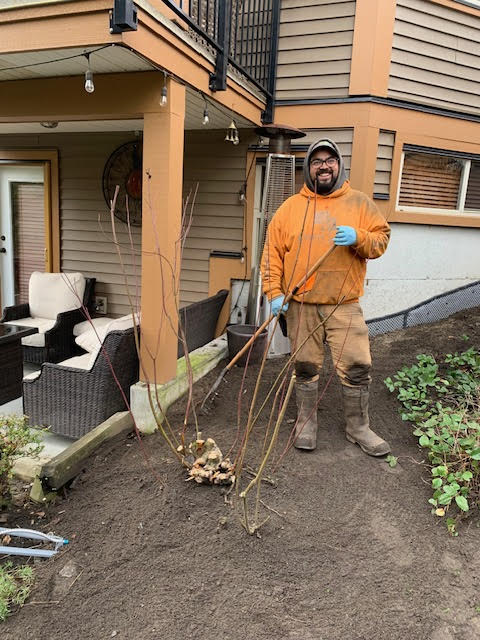The idea
Apprentices in landscape horticulture attend classes for six weeks, usually in winter, when it’s slow. Then for the rest of the year they work under a journeyman in the field. That’s where I come in. I work with them in the field as they learn hands-on skills and more. The set-up is sound and it gets results when the journeyman wants to teach and the apprentices wants to learn.
Dogwood lesson
Today my apprentice started thinning out a mature Red-twig dogwood shrub and he did a good job. However, we still had the same problem. Only the top section was showing the classic red twigs, which is why this shrub is planted. Normally the red twigs show really well in the winter landscape. Not this specimen.
Because there were some concerns about privacy on the patio, I knocked on the door to check with the owner. And she didn’t care: whatever I wanted to do was fine by her. Sadly, because I joke around a lot, my apprentice didn’t believe me when I relayed the owner’s message. There should be complete trust between the teacher and apprentice!
Old wood goes
Now that privacy issues didn’t matter, I got the apprentice to remove all of the mature wood which look gray or brown, not red. He used a hand saw and loppers to do this work.
Once the old wood was gone, all we had left were the young, red canes. And we should get more next season. Assuming the coming blast of cold doesn’t kill the shrub. (Disclaimer: another manager approved the work; I wouldn’t prune dogwoods with -17C temperatures coming later in the week.)
Before:

After:

Training
I love working alongside apprentices in the field but, sadly, I don’t get to all of them. The hands-on work they do is priceless, plus I add extra knowledge when it applies. Then the rest depends on their own work and six weeks of study.
When they come back from school they are more knowledgeable and confident. And that makes me and every landscape boss extremely happy.




